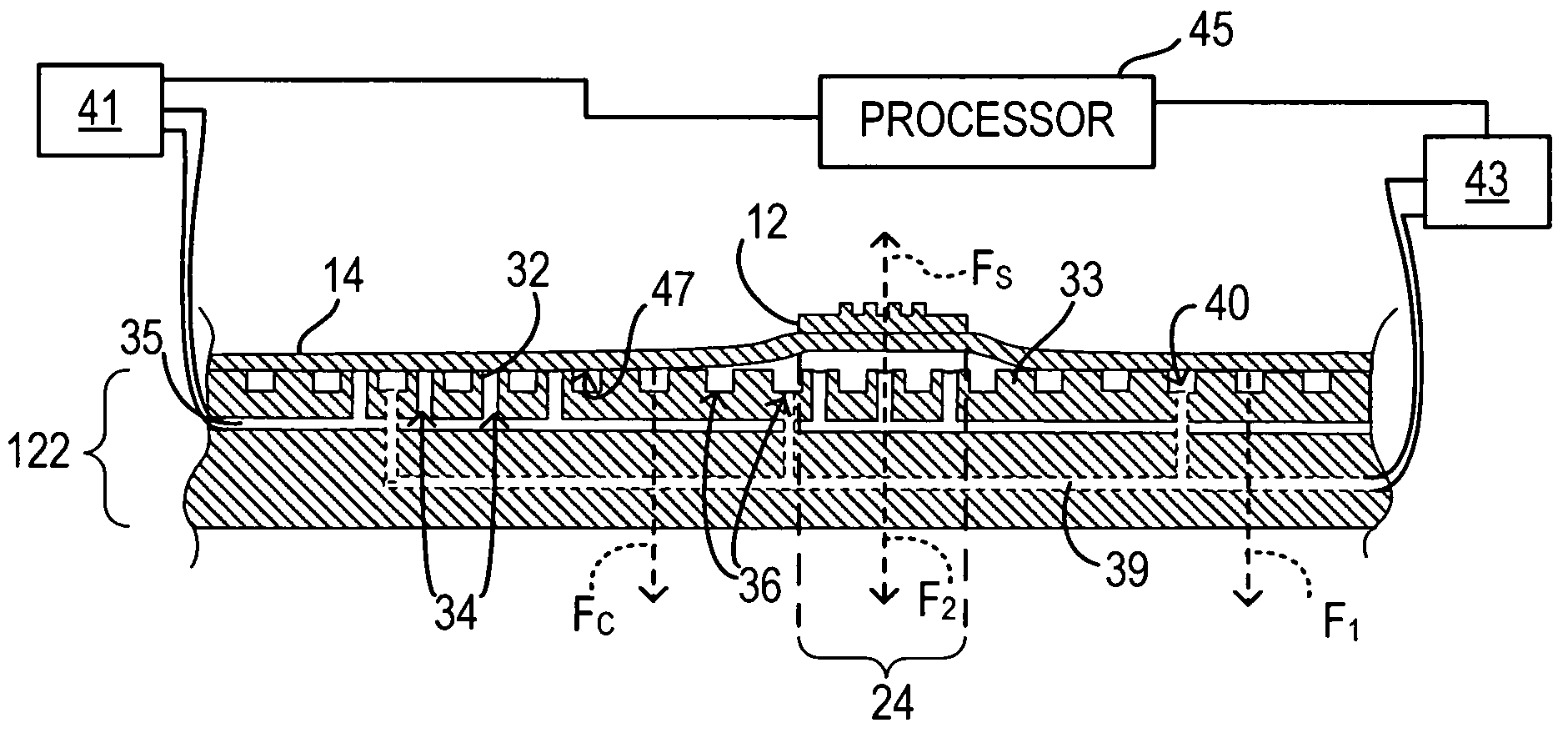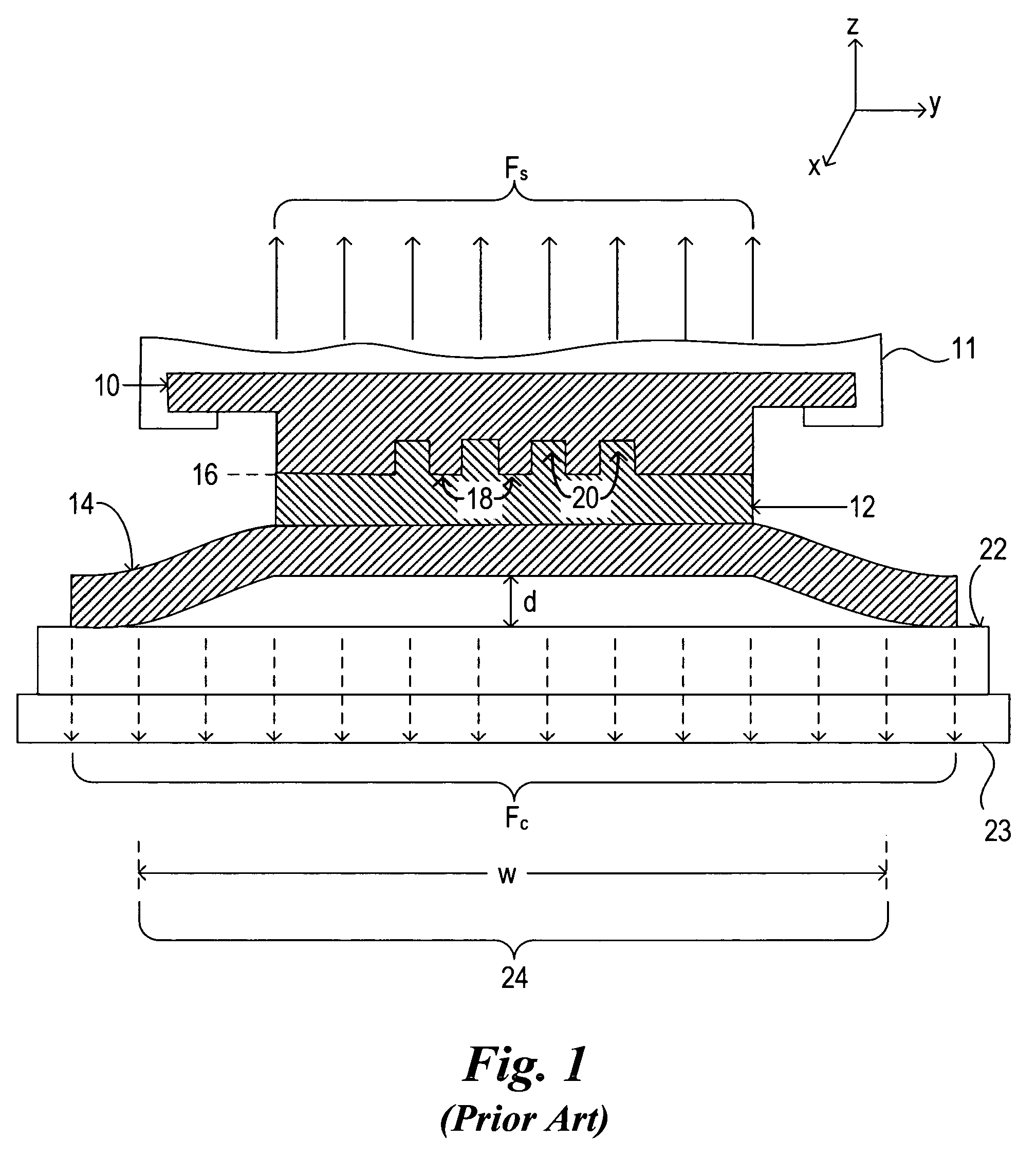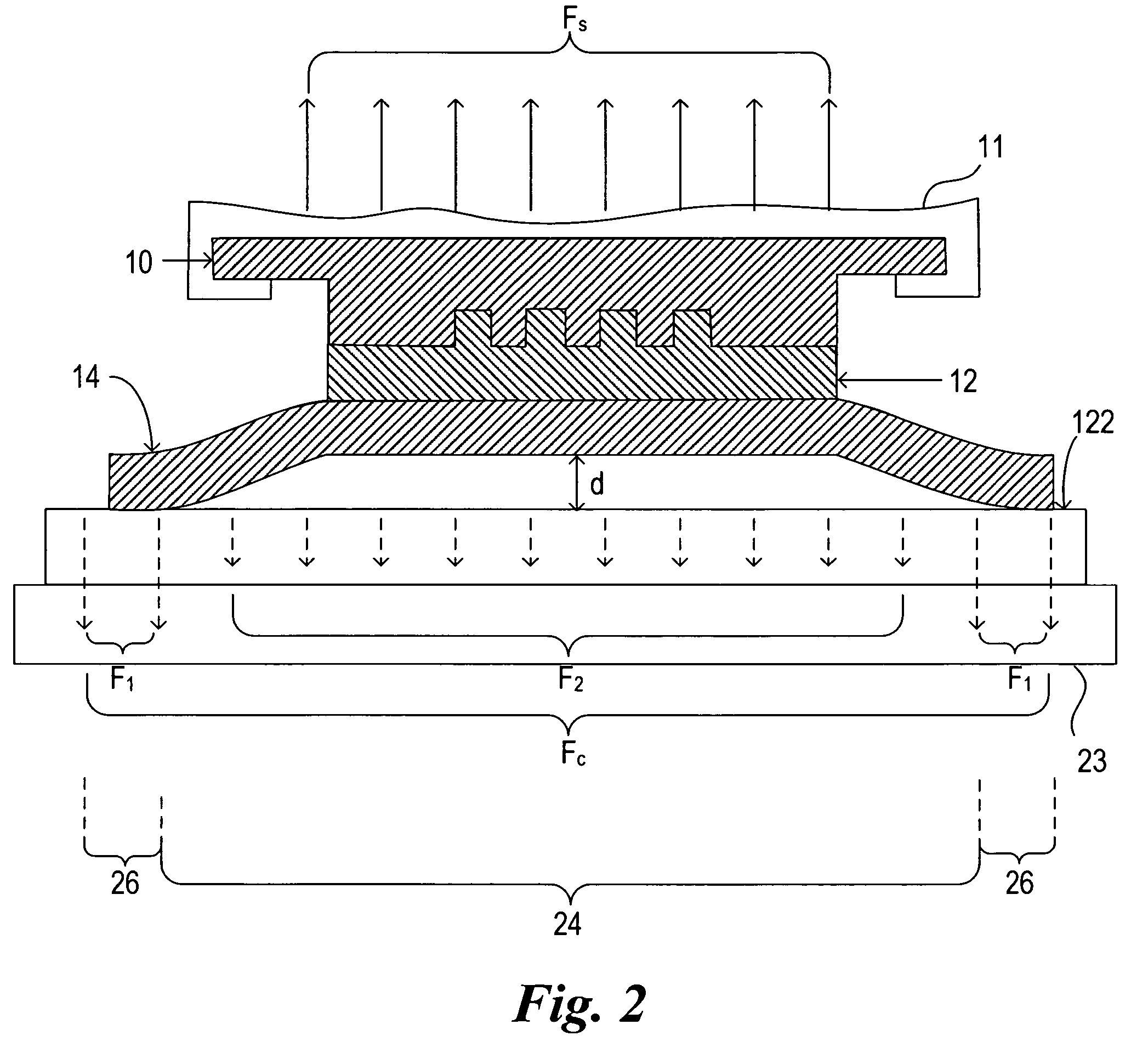Chucking system for nano-manufacturing
a technology of nano-manufacturing and chucking system, which is applied in the field of nano-fabrication of structures, can solve the problems of minimizing the and achieve the effects of reducing the magnitude of separation force, reducing separation force, and minimizing damage to the recorded layer
- Summary
- Abstract
- Description
- Claims
- Application Information
AI Technical Summary
Benefits of technology
Problems solved by technology
Method used
Image
Examples
Embodiment Construction
[0028]Referring to FIG. 1, a template 10 is shown in contact with an imprinting layer 12. Typically, template 10 may be comprised of fused silica and imprinting layer 12 may be formed from any material known in the art. Exemplary compositions for imprinting material 12 are disclosed in U.S. patent application Ser. No. 10 / 763,885, filed Jan. 24, 2003, entitled Materials and Methods for Imprint Lithography, which is incorporated by reference. Imprinting layer 12 may be positioned on a substrate 14, with substrate 14 having a thickness ‘t’ associated therewith. Substrate 14 may be formed from virtually any material including silicon, fused silica, metal or compound materials typically associated with the manufacture of integrated circuits. Template 10 comprises a surface 16 having a plurality of features disposed thereon, with the plurality of features comprising a plurality of protrusions 18 and recessions 20. The plurality of protrusions 18 and recessions 20 form a pattern to be tran...
PUM
| Property | Measurement | Unit |
|---|---|---|
| force F1 | aaaaa | aaaaa |
| force | aaaaa | aaaaa |
| diameter | aaaaa | aaaaa |
Abstract
Description
Claims
Application Information
 Login to View More
Login to View More - R&D
- Intellectual Property
- Life Sciences
- Materials
- Tech Scout
- Unparalleled Data Quality
- Higher Quality Content
- 60% Fewer Hallucinations
Browse by: Latest US Patents, China's latest patents, Technical Efficacy Thesaurus, Application Domain, Technology Topic, Popular Technical Reports.
© 2025 PatSnap. All rights reserved.Legal|Privacy policy|Modern Slavery Act Transparency Statement|Sitemap|About US| Contact US: help@patsnap.com



